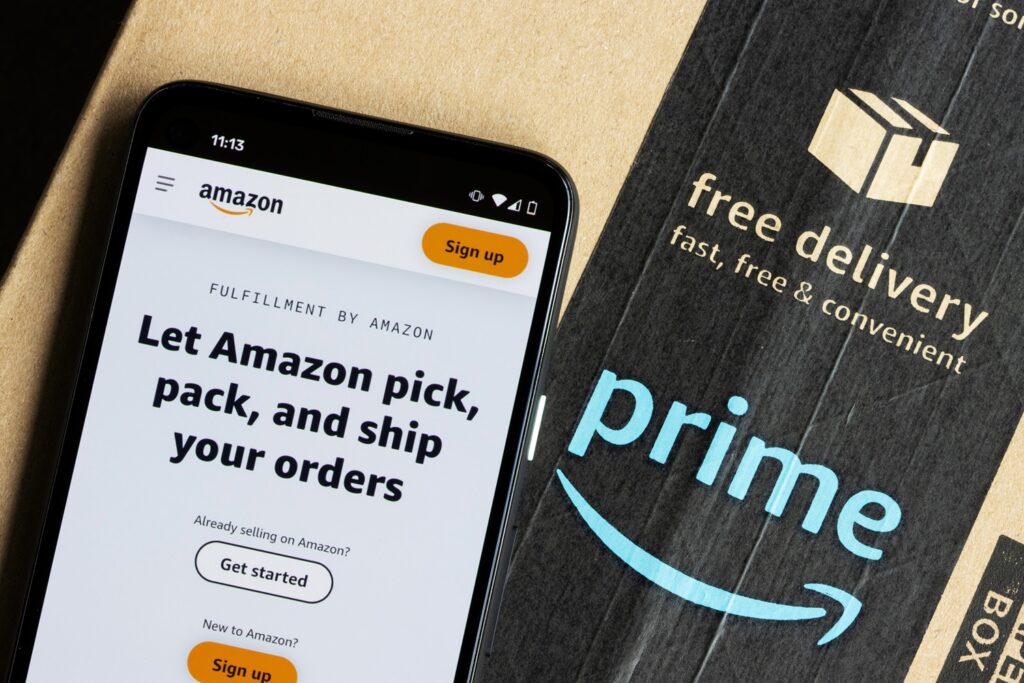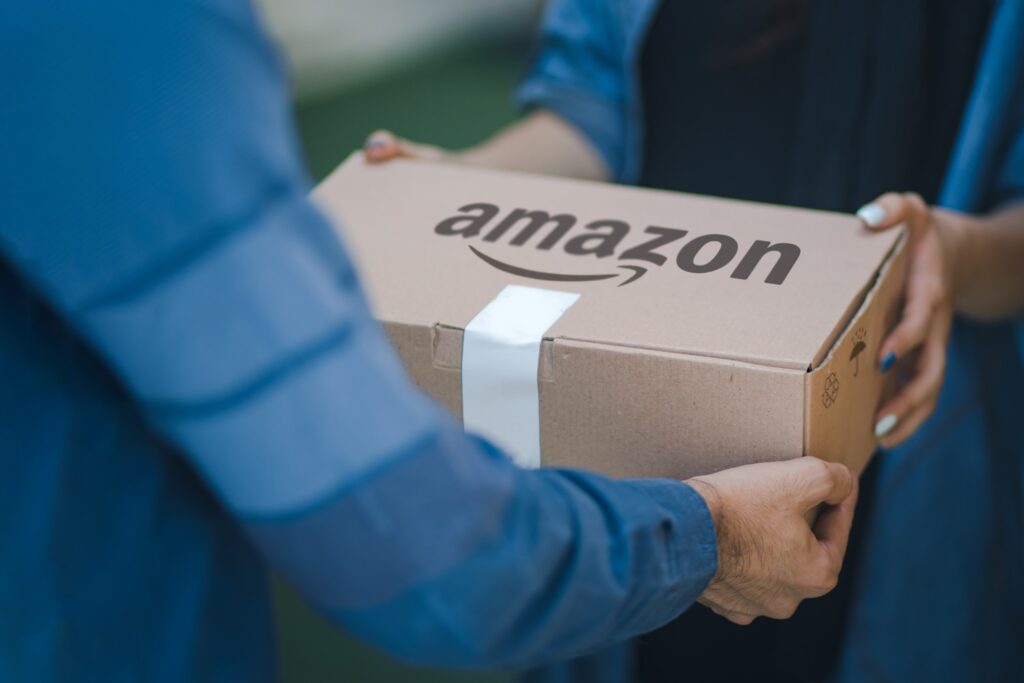Amazon Vendor Central vs Seller Central: Which Should You Choose?

Businesses have two main platforms to choose from when selling on Amazon: Vendor Central and Seller Central. While both have their own set of benefits, it ultimately comes down to your goals and resources as well as how much control you want over your product listings when choosing one.
Vendor Central is invite-only and gives Amazon suppliers direct access to their vast network, while Seller Central allows you to sell directly to customers. This blog post clarifies the most important differences between Amazon Vendor Central and Seller Central so you can identify which one is perfect for your business.
What is Amazon Vendor Central?
Amazon Vendor Central is an invitation-only platform that allows you to sell items directly to Amazon as a 1P (first-party) vendor. In this model, Amazon assumes the role of retailer and buys products for wholesale prices. They are also in charge of all of your listings, pricing, shipping, etc.
Amazon handles logistics for vendors who have less control over pricing and advertising. Vendors produce and ship the commodities to Amazon, handling customer service, returns and inventory management. Vendor Central is often the choice of more prominent manufacturers and brands interested in selling to Amazon as a reseller without having to handle or manage direct sales to customers.
Main services
- Bulk product purchasing
- Inventory management
- Listing and pricing control
- Shipping and fulfilment
- Customer service and returns
- Marketing and promotions
- Analytics and reporting
What is Amazon Seller Central?
Amazon Seller Central is an avenue through which merchants deliver products from their portfolio directly to customers on Amazon, available only for third-party (3P) sellers. Sellers are accountable for account management, product listing and storage.
The two types of accounts are Individual and Professional. Although the Professional plan is subscription-based, it provides access to more advanced features such as analytics and marketing tools, making it perfect for businesses looking to grow on Amazon.
Sellers are able to either ship orders themselves (Fulfilled by Merchant or FBM), including doing their own customer service and returns, or they can use Amazon as a logistics handler (Fulfilled by Amazon or FBA). As an Amazon FBA Seller, you also get to have that coveted “Fulfilled by Amazon” tag on your listings, something many customers look for when making their purchases.
Main services
- Amazon Fulfilled by Amazon (FBA)
- Amazon Fulfilled by Merchant (FBM)
- Amazon Seller Fulfilment Prime (SFP)
- Amazon Multi-Channel Fulfilment (MCF or Buy with Prime)

Amazon Vendor Central vs Amazon Seller Central: The key differences
Amazon Vendor Central
Pros:
- Hands-off operations: Vendor Central is perfect for businesses that want to focus on other parts of the business and have Amazon fulfil as much operational work as possible. Amazon processes orders, ships goods, deals with customers, and processes returns.
- Purchase orders: Amazon purchases inventory upfront through purchase orders, providing vendors with a predictable and reliable cash flow. This model is particularly beneficial for large manufacturers that can meet Amazon’s order demands without worrying about consumer-facing sales efforts.
- Amazon’s marketing and retail support: Access to A+ Content marketing tools and tools like Amazon Vine are available to Vendor Central vendors, which can create product exposure for your inventory.
- Automatic Prime eligibility: All products sold through Vendor Central are automatically Prime eligible. Vendors, therefore, can tap into Amazon Prime, benefiting from quicker shipment and greater visibility. Products eligible for Prime typically outperform in search and have higher buy rates.
Cons:
- Limited control: Vendor Central’s biggest drawback is its lack of control over vital business functions. Vendors have no control over pricing, which is set by Amazon, or product listings or descriptions.
- Invite-only platform: Not all sellers can use Vendor Central. It is an exclusive platform allowing only certain manufacturers and brands to become vendors. By running as an invitation-only program, Amazon restricts the majority of smaller businesses or sellers looking to join.
- Wholesale pricing: Vendors on Vendor Central sell their products to Amazon at a wholesale price. This makes the sales process easier but reduces profit potential by 25%. Since Amazon expects to buy products at lower prices, vendors may find their profit margins squeezed compared to the potential retail margins available on Seller Central.
- Increased competition: Vendors in Vendor Central are competing directly with Amazon. Amazon owns pricing and can go below what other vendors might want to price a product at. This puts pressure on the vendors to lower their prices, or they lose visibility.
Amazon Seller Central
Pros:
- Full control: It allows businesses to have full control over their product listings, pricing and promotions, and inventory management. Sellers can update their listings in real-time, further distinguish themselves from other sellers, and price competitively without being overruled by Amazon.
- Flexible fulfilment options: One of the first benefits of using Seller Central is the ability to choose and control the manner in which orders are fulfilled. This feature has two components: Fulfilled by Amazon, where Amazon fulfils logistics and shipping, and Fulfilled by Merchant, where sellers coordinate their shipments themselves.
- Wider accessibility: Unlike Vendor Central, which is an invitation-only platform, Seller Central is available to anyone who signs up. With Amazon’s recent approach, this level of access makes for a platform much less exclusive to all sizes of businesses, and so even smaller or newly started businesses can now get set up selling on Amazon without having to wait for an invitation.
- Higher profit margins: Sellers in Seller Central get to determine their own retail prices, which could translate to them making more profit margins than the wholesale prices that they receive over Vendor Central.
Cons:
- Responsibility for operations: Unless you do FBA, Seller Central puts a heavy burden on sellers to manage nearly every aspect of their business, from inventory management and customer service to shipping.
- Subscription fees: The Professional Seller plan on Seller Central has a monthly subscription fee. Although this plan comes with significant advantages and makes a business scalable, it is an extra cost in addition to the costs incurred by sellers.
- Less exposure: Products that are not fulfilled by Amazon may not always qualify for Prime, which can lead to reduced visibility on the platform. Since Prime eligibility often boosts sales, sellers using Fulfilled by Merchant may struggle to compete with FBA sellers who benefit from faster shipping and Prime customers.
- Fulfilment challenges: Sellers in FBM take responsibility for the entire fulfilment process, including picking, packing, and shipping orders, as well as managing customer service and returns, so it can be a bit complicated for them to handle. Both of those are incredibly resource-intensive scenarios and require powerful logistics management.

How to choose between them
Unsure whether to choose Vendor or Seller Central for your Amazon business? Here are some considerations to help you find which one will best suit your needs and goals:
Control over pricing and listings
Control over your product pricing and listings is likely the most substantial distinguishing feature determining how Amazon Vendor Central vs Seller Central will work for you. Seller Central allows sellers to manage their prices and product information on Amazon and create marketing promotions by customising their products. This enables dynamic pricing strategies to remain competitive.
Vendor Central gives Amazon much more say over product pricing and listings, leaving vendors little control. This can be good for businesses that want to be hands-off but might reduce some branding / promotional opportunities, especially since Amazon will often lower prices to compete.
Eligibility and access
Amazon Vendor Central is one of those limited access platforms — it requires an invite, meaning a good deal of potential Amazon sellers simply won’t have access to it. It is available almost exclusively to established manufacturers and brands that Amazon itself invites to become vendors.
Amazon Seller Central also allows you to sell on Amazon’s marketplace. However, it can be complicated as it restricts seller access to certain areas of the platform, so you will have to navigate your way around that. Seller Central is the gateway for anyone–both individuals and businesses—to sign up on Amazon to sell their products. This flexibility makes it the perfect fit for small businesses, entrepreneurs, and growing brands.
Fulfilment preferences
Vendor and Seller Central vary in their fulfilment preferences; it can make a huge difference as to which may be right for you. In Vendor Central, Amazon does all the warehousing, shipping, customer service, etc. It’s ideal for businesses that want to outsource these processes completely.
Seller Central offers flexibility, allowing sellers to choose between Fulfilled by Amazon or Fulfilled by Merchant. With FBA, Amazon handles logistics, but you still control pricing. FBM lets you handle fulfilment independently, giving you greater control over your shipping processes but also requiring more resources and operational management.
Profit margins and revenue model
Profit margins are a major key when deciding between Amazon Vendor Central and Seller Central. Businesses sell their products to Amazon at wholesale prices through Vendor Central. While this helps sell in bulk and gain a steady income, it comes with lower profit margins since wholesale prices are generally less than retail pricing.
They enable businesses to sell directly to consumers via their Seller Central platform and allow for the freedom of setting their own retail price. This direct-to-consumer model can lead to higher profit margins, though sellers need to manage customer relationships, marketing, and operations to maximise revenue from each sale.
Business goals and scale
Your long-term business objectives and current size should also factor into your selection. Vendor Central is set up for larger manufacturers or more established brands that are comfortable with purchase orders of large acquired goods and wholesale distribution. Amazon takes care of sales, and businesses focus on enabling production, which this platform facilitates.
On the other hand, if you’re a small business, startup or brand that is just starting out or planning to scale slowly, Seller Central is the way to go. You can start slow — selling a few things here and there as an individual seller — or scale quickly into larger sales volumes, without the need to buy inventory in bulk upfront or enter wholesale agreements.

Summary
In conclusion, choosing between Amazon Vendor Central and Seller Central depends on your business model, control preferences, and growth ambitions. Vendor Central offers a hands-off approach, with Amazon managing logistics and marketing, while Seller Central gives you full control over pricing and fulfilment options. Evaluate your goals carefully to determine which platform aligns best with your strategy.
For expert guidance in navigating Amazon advertising and maximising your sales potential, partner with Mercatus. With our specialised knowledge, you can effectively optimise your Amazon presence and drive growth in the competitive e-commerce landscape. Reach out to Mercatus today to get started!


